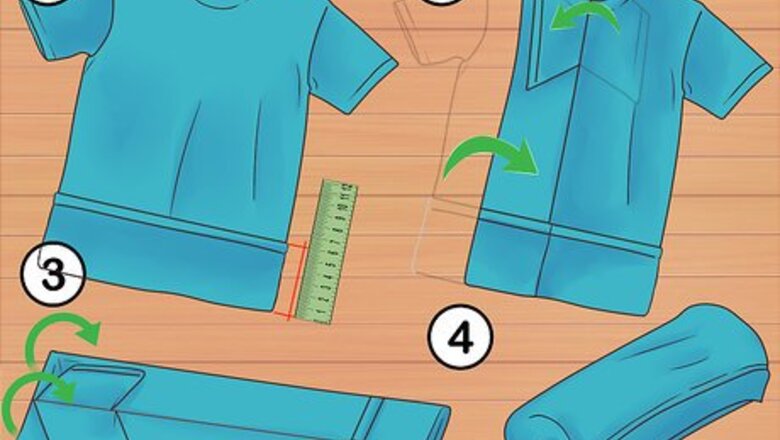
views
Folding and Rolling Clothing
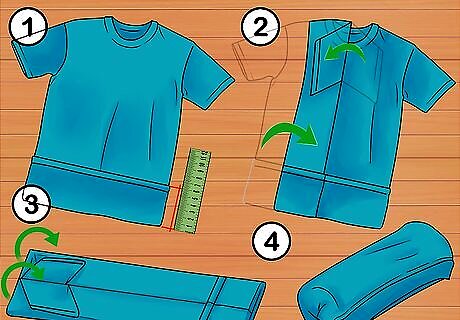
Use the army roll technique to store shirts. Lay your shirt out on a table and turn the bottom 6 inches (15 cm) inside out. Make sure this inverted section is flat and straight. Take the left side of the shirt and fold it towards the centre. Once centred, fold the sleeve back onto the folded shirt portion. Then, do the same to the other side so that the shirt is no thicker than 6 inches (15 cm) wide. Take the collar of the shirt and start rolling it up as tight as you can until it's completely rolled. Holding the finished roll, use the inverted section of the bottom of the shirt to secure the roll of the shirt. Rolling clothing is great for keeping clothes compact, but it can result in more wrinkles in the clothing than traditional folding.
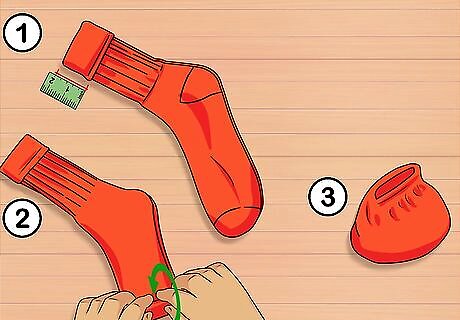
Roll pairs of socks into small bundles. Stack 2 socks on a surface. Fold the top end of the sock back on itself for 2 inches (5.1 cm). Then, from the toes of the socks, roll them up until they're a tight bundle. Then, use the top end of the lower sock in the bundle and wrap it around the entirety of the rolled socks for a neat package.
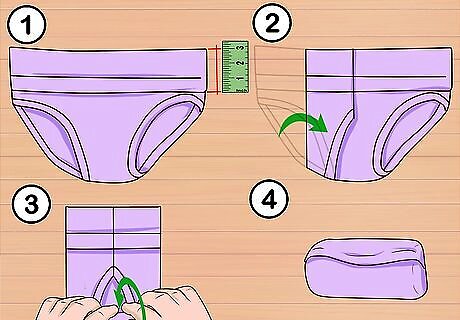
Store underwear in neat rolls. Lay the underwear out on a table. Invert the waistband of the underwear about 3 inches (7.6 cm). Then, fold both edges towards the middle so that they're both parallel to each other. Roll the bottom of the underwear up to the top of the waistband, then like the socks and the shirt, use the inverted section to wrap the underwear into a compact bundle.
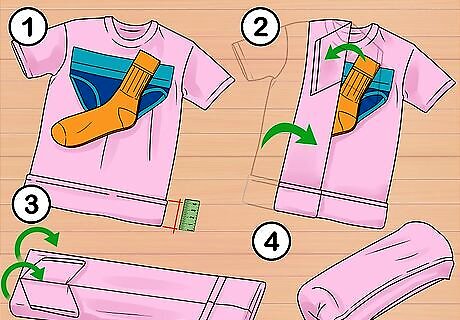
Store a shirt, underwear, and socks into a single bundle to save space. Lay out the shirt on a flat surface. Then lay folded underwear and 2 stacked socks into the chest area of the shirt. Fold in the bottom of the shirt around 4 inches (10 cm). Fold both sides of the shirt towards the middle and over the underwear and socks. Roll the shirt from the collar downwards as tight as you can, then use the inside out section to wrap the entire package.
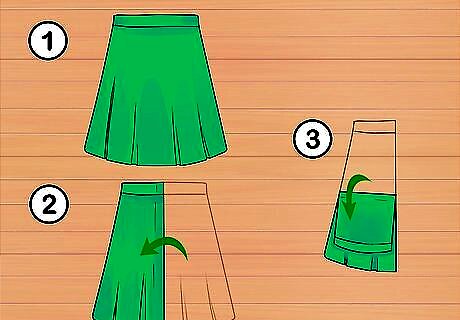
Fold a a skirt to avoid wrinkles. It's hard to roll a skirt in the same way you can roll shirts, underwear and socks. However, folding a skirt means there will be less wrinkles. Lay the skirt out on a flat surface, fold it lengthwise, then in half. Then, tuck it down the side of your bag where it'll stay secure. You can use a wrinkle spray later if there are any wrinkles.
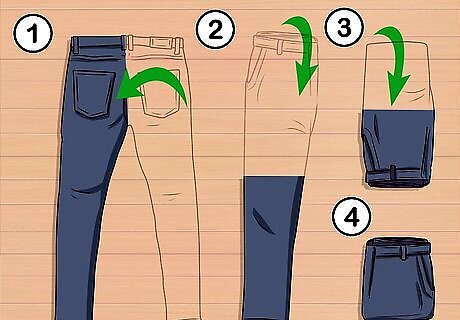
Fold pants and shorts to keep them wrinkle free. Pants and shorts are also more difficult to roll. Fold them in a standard way. Hold them by the waistband and fold them in on themselves, back pocket to back pocket. Lay them on a flat surface, bring the crotch area in towards the center of the leg, then fold the pants from the ankle cuff in halves or third depending on how compact you need them to be.
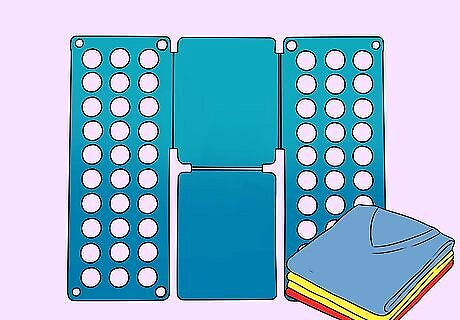
Try using clothing folder for flat storage of clothes. A clothing folder is a mesh folder than you can open up and store clothing in with the goal of minimizing the amount of wrinkles in the clothes. Each folder should come with a folding board that will help you fold your clothing so they're not wrinkled and save space. For example, lay a shirt face down on a flat surface, then put the folding board on the top side of the shirt so that it covers the collar. Fold both sides and sleeves over the top of the board then fold the bottom of the shirt back onto the board. Then, put the folded product inside the clothing folder.
Storing Clothing Strategically
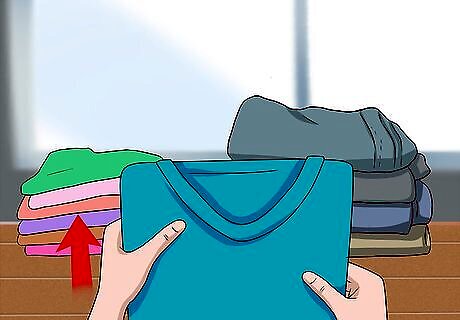
Sort all your items by weight. Lay every item you want to put into your bag across a flat surface. Then, from left to right, lay out your items from lightest to heaviest. Double check you have everything at this stage, because if you pack it all and forget something you may have to unpack everything again.
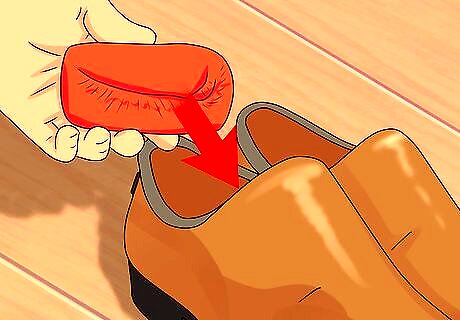
Store as much as you can within the soles of shoes. Shoes offer lots of protection for items that can fit inside them. Store pairs of socks, underwear, or even rolled up shirts inside of shoes to keep them safe and to save space elsewhere.
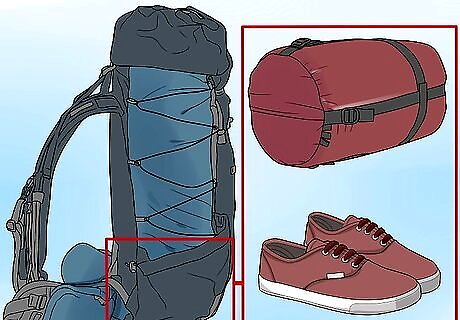
Store all light items at the bottom of the bag. Put all spare shoes, sleeping bags, and general accessories that you won't access frequently at the bottom of the bag. Putting all the light clothing at the bottom of the bag means that they will be able to squish down once you put heavier clothing on top of them.
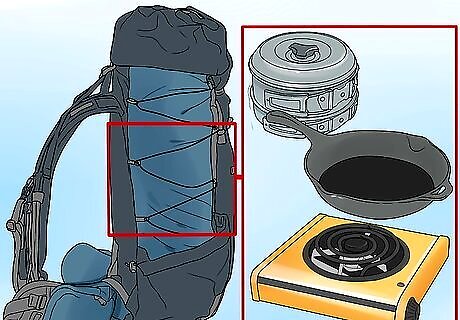
Put all heavy items like camping essentials in the center of the bag. If you are camping this is where you should store all essential supplies such as pots, pans, stoves, and camping gear as well as any precious electronics that you can't do without. You will be accessing this area of the bag at least once a day. By placing all these items in the middle of the bag, they are receiving the maximum amount of cushioning by the clothing at the bottom and the clothing that will be on top.

Place all medium weight items at the top of the bag. You will be accessing the top of the bag frequently, so put anything here that you'll need on a daily basis. This could be hats, jackets, umbrellas, or extra layers depending on the situation. By putting these items at the top of the bag, you'll be able to protect yourself from the elements as soon as possible.
Storing and Organizing Clothes in the Bag
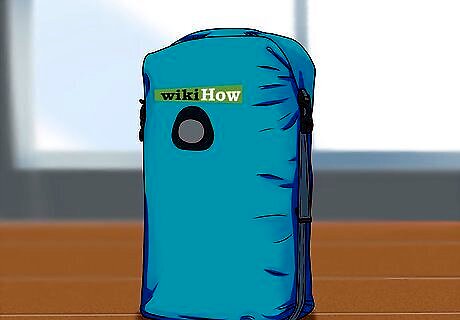
Buy a compression dry bag if you're camping. A compression dry bag is a special kind of backpack ideal for camping and storing clothes. When you put the clothes inside and close it, the bag will remove as much air as possible from the interior of the bag, giving you more space to store. The bag will also protect your clothing from rain, so it's ideal if you are camping.
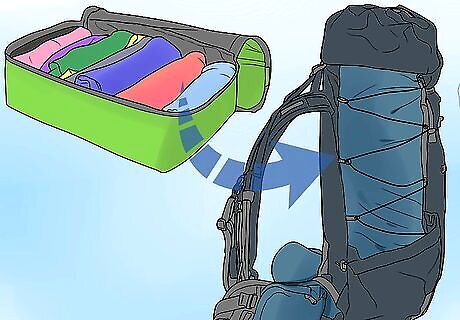
Store your clothing using packing cubes. Packing cubes are small plastic cubes with zips along the side that allow for efficient storage of your clothing. Use the rolling and folding techniques discussed earlier to get your clothing as small as possible. Then put them inside the cubes. Treat the inside of your bag like a game of Tetris. You can stack the different sized cubes in many different ways, but they'll always protect the clothes. Packing cubes are great for unpacking and packing your bag again quickly, so they are ideal for long term travel. Expert Answer Q How should you pack necklaces or other small jewelry before traveling? Caitlin Jaymes Caitlin Jaymes Closet Organizer & Fashion Stylist Caitlin Jaymes is a Closet Organizer and Fashion Stylist based in Los Angeles, California. With a background in Fashion PR and Fashion Design, she specializes in creating wardrobes for her clients with pieces they already own. She has experience working with celebrities, editorial shoots, and men and women of all ages. Caitlin uses fashion and organization to help instill and influence confidence, ambition, and stress-free lifestyles for all her clients. She runs her business by two guiding principles: “fashion has no rules, only guidance on how to look and feel your best” and “life has too many stressors, don’t let clutter be one of them.” Caitlin’s work has been featured on HGTV, The Rachael Ray Show, VoyageLA, Liverpool Los Angeles, and the Brother Snapchat Channel. Caitlin Jaymes EXPERT ADVICE Answer from Caitlin Jaymes: You can use little plastic baggies to pack necklaces and other small jewelry. Remember to keep each item separate so that they do not get tangled.
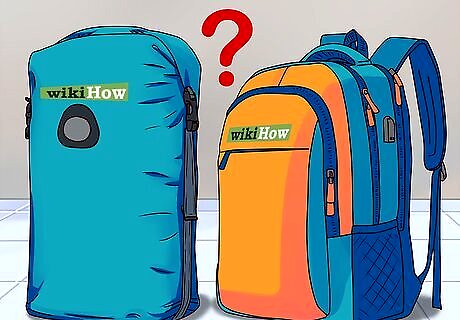
Select the correct kind of backpack for your form of travel. The most important equipment choice is what sort of backpack you are going to use. Different backpacks can serve many functions depending on your needs. If you are going on a hiking trip, you will need a backpack that is waterproof so that your clothes will stay safe inside. If you are travelling for a long period of time, you will need a backpack that has many different compartments so that you can store your clothing as efficiently as possible. Travel backpacks are usually padded as well which can offer extra protection for the contents. If you're staying a short while at a friend's house and need a spare change of clothes, a normal backpack combined with the packing tips discussed earlier will suffice.

Store toiletries and liquids in separate pockets. Most backpacks will have outer pockets and zips to store smaller items in. If possible, put all your toiletries and liquids into these pockets away from your clothes. This means that if there's an accidental spillage your clothes won't be ruined.


















Comments
0 comment